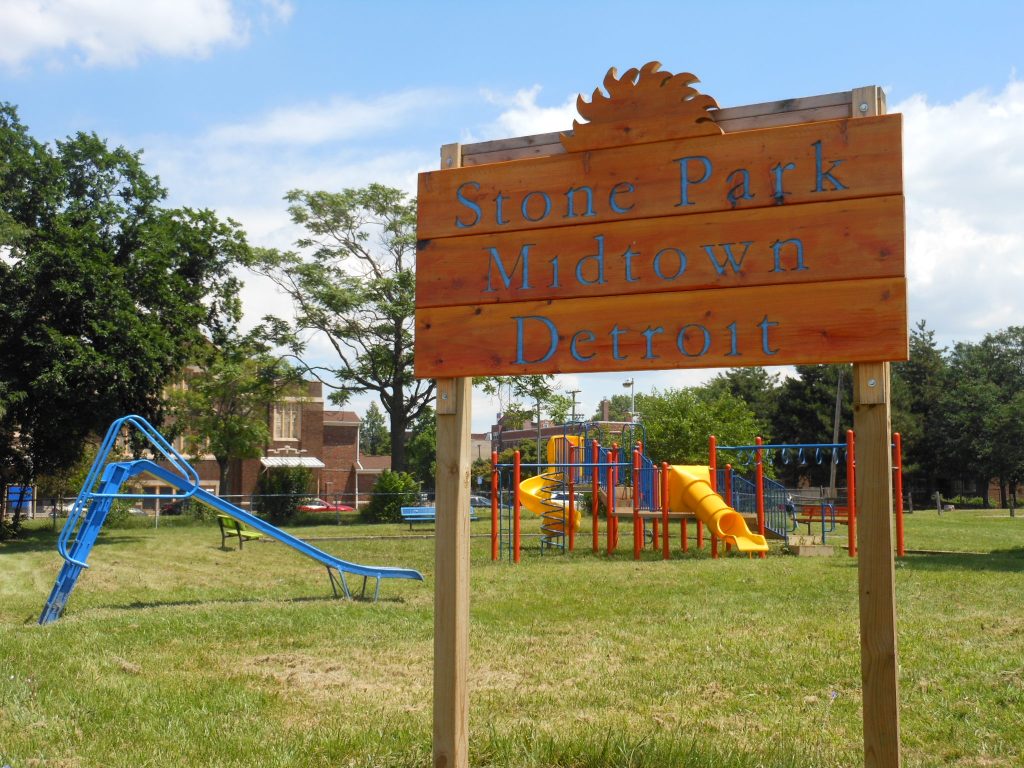CuriosiD: Who is Louis Stone in Detroit’s history?
Annamarie Sysling March 15, 2015WDET answers Joseph Kakos’ question, “who was Louis Stone in Detroit’s history?” as part of our CuriosiD series.

In this installment of CuriosiD, WDET’s Anna Sysling answers a question submitted by listener Joseph Kakos:
“I always drive by Louis Stone Pool on Forest and Lodge, and I always wonder who Louis Stone was in the history of Detroit.”
Story told by Anna Sysling
To find the answer to Joseph’s question, I spoke with Andrea Gallucci. She’s a librarian at Communicore Post in Birmingham, an archivist at Temple Beth El Congregation in Bloomfield Hills and knows a great deal about the life of Louis Stone.
First, Gallucci tells me that Louis Stone wasn’t always Louis Stone. His given name? Leiba Stepansky. He was born in Russia and grew up in a small village where his father owned a shoe factory. Gallucci says early on in life, Stone (AKA Stepansky) knew he wanted to go to medical school. However, living in Russia as a Jewish person at this time made Stone’s aspirations an unlikely possibility. According to Gallucci, only about 5 percent of people enrolled in college in Russia at that time (the early 20th Century) were Jewish, and the admission process was daunting to say the least. She says that ultimately a judge deemed Stone an illegitimate child, and because of this he was denied admission to college. After being rejected, he left Russia around 1913 in pursuit of higher education and a better life.
Stone ended up in Boston, where he attended night school to learn English, finished high school, went to college and received his pharmacist’s certificate. In 1925, Stone left Boston and came to Detroit, where the auto industry was taking off and the population was booming. Gallucci says Stone initially worked as a druggist in one Detroit apothecary, before opening up his own drugstore. The location Gallucci refers to as Stone’s “home base” pharmacy was located at Third Street and Stimson Avenue (the streets don’t intersect anymore, but to give you an idea, it was a little North of the Masonic Temple).
During Stone’s time in Detroit, he had friends that ran the range of society. He was friends with politicians, mayors, students, judges and attorneys. But more than being a good friend to many, Stone was a children’s advocate. Gallucci says he threw some major parties for children in his neighborhood —block parties with food, entertainment and more. The parties were intended to create a safe and fun environment for children, but they were inspired by tragic events that occurred one fateful night:
On Halloween night, 1928, Gallucci says a woman entered Stone’s pharmacy in hysterics. She needed something to calm her nerves, because her son had been hit by a car and killed while trick-or-treating earlier in the evening.
While Stone never had any children of his own, his connection to kids was potentially most evident in his “OK Louie” party trick —possibly the most brilliant technique ever to convince pint-sized partygoers when it’s time to go home. Gallucci says Stone would tell children a secret signal —maybe a whistle, clap or specific word—at the beginning of each party, and later on when Stone gave the signal, every child would stop what they were doing and yell “OK Louie,” which meant it was time to wrap things up.
Louis Stone went on to organize countless activities and events for children in Detroit, and was recognized for his humanitarian efforts by organizations across the state. Gallucci says one year, the Michigan Legislature even identified him as the person most responsible for decreasing juvenile delinquency. Stone continued serving his community up until his death on January 3, 1953, and just a few months later, the Detroit Common Council passed an ordinance to honor Stone’s life with the Louis Stone Memorial Pool and Park.
